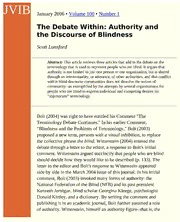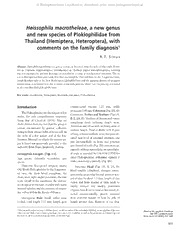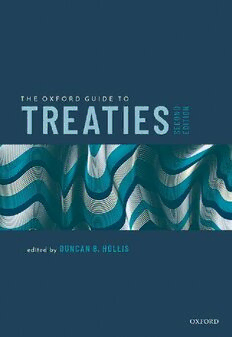
Preview The Oxford Guide to Treaties
THE OXFORD GUIDE TO TREATIES The Oxford Guide to Treaties second edition Edited by DUNCAN B. HOLLIS 1 3 Great Clarendon Street, Oxford, OX2 6DP, United Kingdom Oxford University Press is a department of the University of Oxford. It furthers the University’s objective of excellence in research, scholarship, and education by publishing worldwide. Oxford is a registered trade mark of Oxford University Press in the UK and in certain other countries © The Several Contributors 2020 The moral rights of the authors have been asserted First Edition published in 2012 Second Edition published in 2020 Impression: 1 All rights reserved. No part of this publication may be reproduced, stored in a retrieval system, or transmitted, in any form or by any means, without the prior permission in writing of Oxford University Press, or as expressly permitted by law, by licence or under terms agreed with the appropriate reprographics rights organization. Enquiries concerning reproduction outside the scope of the above should be sent to the Rights Department, Oxford University Press, at the address above You must not circulate this work in any other form and you must impose this same condition on any acquirer Crown copyright material is reproduced under Class Licence Number C01P0000148 with the permission of OPSI and the Queen’s Printer for Scotland Published in the United States of America by Oxford University Press 198 Madison Avenue, New York, NY 10016, United States of America British Library Cataloguing in Publication Data Data available Library of Congress Control Number: 2019955606 ISBN 978– 0– 19– 884834– 9 Printed and bound by CPI Group (UK) Ltd, Croydon, CR0 4YY Links to third party websites are provided by Oxford in good faith and for information only. Oxford disclaims any responsibility for the materials contained in any third party website referenced in this work. For Emily Preface to the Second Edition It was the best of times, it was the worst of times, it was the age of wisdom, it was the age of foolishness, it was the epoch of belief, it was the epoch of incredulity . . . Charles Dickens, A Tale of Two Cities Dickens provides an apt summation of the current state of treaty law and practice. In some ways, it is the best of times. Today, treaties dominate the international legal landscape. Since I first published The Oxford Guide to Treaties, States and depositaries have registered an additional 8,000 treaties (bringing the total registration rolls from 64,000 up to 72,000, not- withstanding that many States fail to register their treaties or do so only after lengthy de- lays).1 Among these, States have concluded seminal multilateral treaties, such as the Arms Trade Treaty2 and the Paris Agreement,3 alongside new efforts at global governance on issues such as international trade,4 the environment,5 humanitarian relief,6 dispute settle- ment,7 and non-p roliferation.8 Whether because of their number or substance, treaties are now ubiquitous in the day- to- day work of international (and in many states, domestic) lawyering.9 Today, judges, diplomats, government lawyers, international organization officials, activists, and aca- demics regularly read, invoke, and interpret treaties in manifold bilateral, multilateral, and multistakeholder settings. Consider, for example, the work of the 24 ‘permanent’ international courts and the 37,000 binding rulings they have issued since the end of the Cold War.10 Treaties provide the foundation for all these cases; they are almost always the source of the court’s jurisdiction and authority, and, in many cases, provide the substan- tive standards for evaluating litigant behavior. Treaties have played a similar role—w ith often- significant economic repercussions— in the 676 reported cases of investor- State 1 See Chapter 11 for more on UN treaty registrations. 2 Arms Trade Treaty (adopted 2 April 2013, entered into force 24 December 2014) [2013] 52 ILM 985. 3 Paris Agreement (adopted 12 December 2015, entered into force 4 November 2016) [2016] 55 ILM 740. 4 See eg Protocol to the WHO Framework Convention on Tobacco Control to Eliminate Illicit Trade in Tobacco Products (adopted 12 November 2012, entered into force 25 September 2018) (I55487) at <https:// www. who.int/ fctc/ protocol/ illicit_ trade/ protocol- publication/ en/> . 5 See eg Minamata Convention on Mercury (done 10 October 2013, entered into force 16 August 2017) [2016] 55 ILM 582. 6 See eg Food Assistance Convention (adopted 25 April 2012, entered into force 1 January 2013) 2884 UNTS 5. 7 See eg UN Convention on International Settlement Agreements Resulting from Mediation (adopted 20 December 2018, not yet in force) CN 154.2019, at https://u ncitral.un.org/s ites/u ncitral.un.org/f iles/ media-d ocuments/E N/T exts/U NCITRAL/A rbitration/m ediation_c onvention_v 1900316_e ng.pdf ; UN Convention on Transparency in Treaty- based Investor- State Arbitration (adopted 10 December 2014, en- tered into force 18 October 2017) at <https://t reaties.un.org/d oc/T reaties/2 014/1 2/2 0141210%2011-5 2%20 AM/C H_X XII_3 .pdf>. 8 See Treaty on the Prohibition of Nuclear Weapons (adopted 7 July 2017, not yet entered into force) UN Doc A/ CONF.229/ 2017/ 8. 9 For more on the domestic applications of treaties, see Chapter 15. 10 K Alter, The New Terrain of International Law (Princeton Univ Press, Princeton 2014) 4. viii Preface to the Second Edition arbitrations.11 Major disputes like those in the South China Sea remind us, moreover, of the dramatic geo- political implications treaties have even where their existence or meaning is contested.12 Simply put, today’s treaties may have a more prevalent and important role in the construction of international law and international relations than at any other time in human history. And yet, for many treaty lawyers, these are not good times. An AJIL Unbound Agora asked in 2014 if we are witnessing The End of Treaties?13 Although further empirical re- search is needed, several signs suggest that States and scholars may no longer regard the treaty as the go- to instrument for international agreement. The World Trade Organization has not reached a major agreement in the decades since its creation,14 while 2017 witnessed the conclusion of the fewest bilateral investment treaties since 1983.15 In the United States, the post- Cold War boom of multilateral treaty- making has receded dramatically,16 while its most visible mechanism for joining treaties— ratification following advice and consent of a supermajority of the U.S. Senate—i s widely viewed as broken.17 In lieu of treaties, States appear to increasingly employ non- binding ‘political commit- ments’ (or ‘informal agreements’ to use Timothy Meyer’s term in Chapter 3).18 Whether due to the speed and flexibility that informality allows— or perhaps the (undemocratic) oppor- tunity to evade often lengthy and uncertain legislative approval processes— States now use political commitments in lieu of treaties to redress a range global governance issues. When States sought to respond to the 2008 financial crisis, they chose a political commitment— Basel III— to do so.19 Likewise, participants in the 2015 Joint Comprehensive Plan of Action (JCPOA) sought to regulate Iran’s nuclear program without employing the classic treaty form.20 The challenge to treaties is not, however, only a matter of competition— the last decade has witnessed rising distrust in global governance generally and various agreements 11 See RL Wellhausen, ‘Recent Trends in Investor– State Dispute Settlement’ (2016) 7 J Int’l Dispute Settlement 117, 118 (cataloging recorded arbitrations from 1990–2 014). 12 See eg An Arbitral Tribunal Constituted under Annex VII to the 1982 United Nations Convention on the Law of the Sea (The Republic of Philippines v The People’s Republic of China), Award on Jurisdiction, PCA Case No 2013- 19 (29 October 2015). 13 ‘Agora, The End of Treaties?’ (2014) 108 AJIL Unbound 30-7 8. 14 See T Meyer, ‘Agora, The End of Treaties? Collective Decision- Making in International Governance’ (2014) 108 AJIL Unbound 30-3 6. 15 UNCTAD, ‘Recent Developments in International Development Agreements’ (May 2018) IIA Monitor No 1, 2. 16 C Galway Buys, ‘Agora, The End of Treaties? An Empirical Look at U.S. Treaty Practice: Some Preliminary Conclusions’ (2014) 108 AJIL Unbound 57, 58. According to Buys, the United States joined 105 multilateral treaties between 1990 and 1999 and only 62 between 2000 and 2009 (the lowest number since the 1960s). Treaty actions in the ensuing decade suggest a further decline. Although the US can join multilateral treaties by other means, it is notable that the US Senate gave advice and consent to only 8 multilateral treaties from 2010–2 018. See US Senate Foreign Relations Committee, ‘Treaties’ at <https:// www.foreign.senate.gov/ treaties>. 17 See eg C Bradley, O Hathaway, and J Goldsmith, ‘The Death of Article II Treaties’ Lawfare (13 Dec 2018); Secretary of State John Kerry, ‘Testimony Before the Committee on Foreign Affairs’, House of Representatives, Ser No 114- 93 (28 July 2015) (responding to a question on why the Iran Deal was not concluded as a treaty: ‘frankly, it has become physically impossible. That is why. Because you can’t pass a treaty anymore. It has become impossible to, you know, schedule. It has become impossible to pass’). 18 DB Hollis, Second Report on Binding and Non-B inding Agreements, Inter- American Juridical Committee, OEA/ Ser.Q, CJI/d oc.553/ 18 (6 February 2018) [13] (responding to OAS Questionnaire, Colombia, Ecuador, Peru, and Uruguay indicate witnessing the increasing use of political commitments). 19 Meyer (n 14) (discussing OECD’s Guidelines for Multinational Enterprises). 20 See JCPOA (done at Vienna 14 July 2015) at <http:// eeas.europa.eu/ archives/ docs/ statements- eeas/ docs/ iran_ agreement/ iran_ joint- comprehensive- plan- of- action_ en.pdf>. Preface to the Second Edition ix manifesting it specifically. As Larry Helfer explains in Chapter 26, States have begun to head towards the exits in manifold treaty contexts. Brexit looms large as the most significant— and complex— example.21 But the United States is not far behind, walking back its commit- ments to both binding (the Paris Agreement) and non- binding (the JCPOA) international instruments.22 Nor is this a solely Anglo-A merican phenomenon. Other States have with- drawn from the Whaling Convention (Japan), the Rome Statute (Burundi, the Philippines) and the Washington Convention establishing the International Centre for the Settlement of Investment Disputes (Bolivia, Ecuador, and Venezuela).23 UNCTAD reports, moreover, that 2017 marked the first year where the number of BIT terminations (22) outpaced the number of new treaties concluded (18).24 How should international lawyers reconcile these contradictory narratives? On the one hand, we might attempt to declare one descriptively superior to the other. Richard Gowan, for example, suggests that ‘reports of the death of international cooperation appear to be exaggerated, at least for now’.25 Indeed, evidence of US treaty retrenchment may not sug- gest a global trend so much as an idiosyncratic example. And even if treaties are forming at lower rates, it does not mean the concept is moving towards a definitive end-p oint of obso- lescence. On the contrary, it might signal the strength and successes of treaty-m aking— the pervasiveness of existing treaties on everything from fish to finances reducing the need for new agreements. Or, treaties’ popularity— and utility— may be cyclical in lieu of some one- way, downward ratchet. In short, treaty proponents may insist that the proper narrative is one of increasing inter- dependency where the treaty operates like a Swiss Army knife, per- forming a variety of necessary and valuable functions related to international cooperation and collective action. Alternatively, treaty- critics might— subject to more empirical evidence— make the case that the treaty (if not international law writ large) has passed its heyday. Even where parties comply with their terms, it is not clear how often treaties are actually effective in achieving the goals that motivated their formation. More agile alternatives like pol- itical commitments are readily available when States or other stakeholders agree on the need for international cooperation. Growing populist sentiments may, moreover, call into question the need for (or utility of) such international cooperation in the first place. Taken together, such evidence could predict— and explain— increasing resistance to new agreements and/ or the withdrawal from existing ones. In other words, there may be a compelling case for a story of declining treaty- formations, even if there is not yet sufficient evidence of systemic retrenchment in the law and practice applying all extant treaty commitments. On the other hand, international lawyers may attempt to accommodate both of these tales in lieu of giving one dominion. This is, after all, a sophisticated and widely-u sed ve- hicle for agreement among States and other stakeholders. The breadth and depth of current 21 See P McClean, ‘After Brexit: the UK will need to renegotiate at least 759 treaties’ Financial Times (31 May 2017). 22 See Chapter 26 at 635 (recounting US indications of intent to denounce the Paris Agreement and withdraw from the Universal Postal Union, while also noting US withdrawal from the UN Economic and Social Council (UNESCO) as well as its termination of the 1955 Treaty of Amity with Iran and the Intermediate-R ange Nuclear Forces Treaty with Russia). 23 See ibid. 24 UNCTAD, ‘Recent Developments’ (n 15). 25 R Gowan, ‘Multilateralism in Freefall’ Center for Policy Research (UN University, 30 July 2018).
The list of books you might like

Atomic Habits James Clear

Credence

Do Epic Shit

The Sweetest Oblivion (Made Book 1)
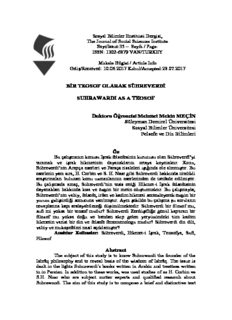
BİR TEOSOF OLARAK SÜHREVERDİ SUHRAWARDI AS A TEOSOF Doktora Öğrencisi Mehmet ...
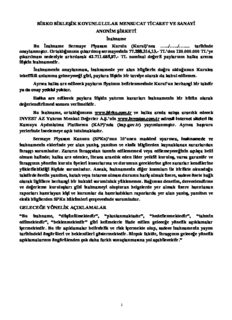
BİRKO BİRLEŞİK KOYUNLULULAR MENSUCAT TİCARET VE SANAYİ ANONİM ŞİRKETİ
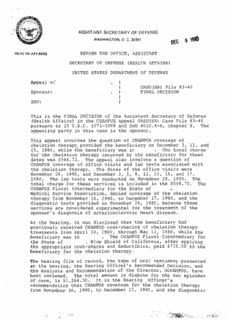
C. OEC 9

Chocolat / Шоколад
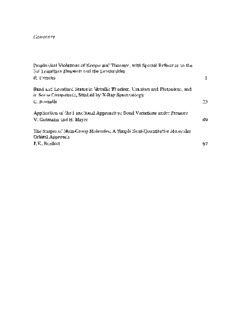
Bonding and Compounds of Less Abundant Metals
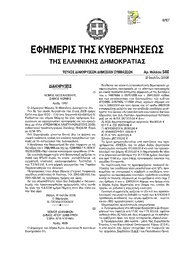
Greek Government Gazette: Part 7, 2006 no. 540

Steinberg's Fixed Price List: 1993
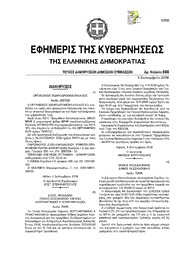
Greek Government Gazette: Part 7, 2006 no. 666
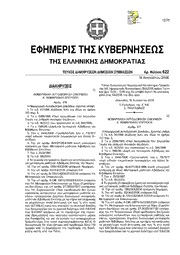
Greek Government Gazette: Part 7, 2006 no. 622

DTIC ADA606152: Evaluating the Contribution of Uncertainty Management to a Fusion System

Obiter
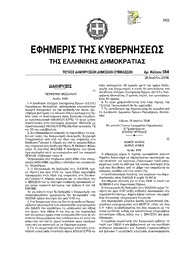
Greek Government Gazette: Part 7, 2006 no. 564

Topology and Shape Optimization with Abaqus

ERIC EJ738089: Meaningful Responses to Literature

cadernos de história

Charles Dupin (1784-1873) and His Influence on France: The Contributions of a Mathematician, Educator, Engineer, and Statesman

